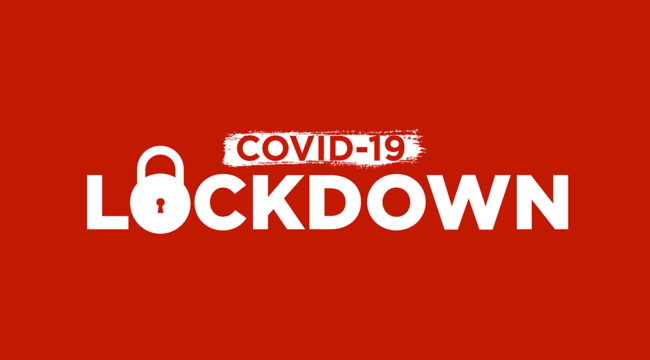“It’s Really Bad”
“IT’S really bad”…
“It” is the condition of small business in one populous American state — the garden state of New Jersey.
31% of its small businesses have remained shuttered since lockups began. In neighboring New York, the figure is 28%.
Combine the two thickly populated states…
The lights are out, the machines are down and the cobwebs are up in nearly one-third of small businesses.
That is, nearly one in three small businesses is dead — or in a deep coma.
“It’s really bad,” laments Eileen Kean, New Jersey state director of the National Federation of Independent Businesses…
“And without federal dollars coming into New Jersey, the Main Street stores and other establishments are not gonna make it through the winter.”
Meantime, New Jersey infections are ballooning. The state recently reported 4,669 cases in one day alone.
Another lockdown is “on the table,” threatens the governor.
Yet will food be on the table this winter… if the lockdown proceeds?
Now swim the Hudson…
New York City May Not Recover Until 2025
In New York the outlook is grim; a winter of discontent is likely ahead…
“It’s devastating how many restaurants have shuttered and jobs have been lost,” says Mr. Andrew Rigie, executive director of NYC Hospitality Alliances.
“And with the infection rate rising and the looming threat of indoor dining closing again, many more will close unless the government provides adequate support to these small businesses.”
What will become of the owners? And the workers? Where will they turn?
Mr. Mark Zandi is chief economist at Moody’s Analytics. He hazards New York City may not recover until 2025.
Why not? Because New York is not structurally designed for social distancing:
This is an event that struck right at the heart of New York’s comparative advantages. Being globally oriented, being stacked up in skyscrapers and packed together in stadiums: the very thing that made New York the pandemic undermined New York, was upended by it.
Meantime, Broadway remains dark.
Expect a New Recession Starting Now
Lest you think New York and New Jersey suffer exceptional casualty rates, please have another guess…
About 30% of small businesses remain shut across the 50 states — on average.
Can the next recession be far off as additional lockdowns menace? No, says Jim Rickards:
The economy was in a technical recession from February to July 2020. Then that recession ended and growth resumed from July to November 2020… Now, we’re heading into a second technical recession, which could become quite severe in the first quarter of 2021… The recessions are caused by the imposition of extreme lockdowns…
Most of the new Biden team favor lockdowns even though they don’t work. So, expect more lockdowns. And, expect a new recession starting now as the lockdowns are imposed.
Second-quarter GDP collapsed at an annualized 32% rate… in the dread depths of the pandemic. Can this economy endure another similar lacing?
$4.8 Trillion of Lost GDP?
The pandemic could steal between $3.2 trillion and $4.8 trillion from the economy over the course of two years.
That is according to a freshly hatched USC study.
This study likewise concluded that compulsory closings and partial reopenings could inflict a 22% GDP hemorrhaging in one year alone.
Here are additional findings:
54 million to 367 million workdays would be lost due to people getting sick or dying from COVID-19;
2 million to nearly 15 million workdays would be lost due to employees staying home to care for sick loved ones;
Job losses could range from 14.7% to 23.8%, and in the worst-case, affect an estimated 36.5 million workers.
The angels and saints tremble at the prospect.
Yet fear not — the cavalry is mounting up…
A Bipartisan Spending Bill
Senate “moderates” proposed a bipartisan $908 billion spending bill this morning.
Our minions inform us that small businesses would receive some $300 billion of relief.
$240 billion would go funneling to state and local governments. $180 billion would sustain the jobless.
The remainder would wend its way into the coffers of the airlines and other segments of the transportation industry.
At writing, neither party’s kingpins have blessed the plan.
Democrats are bucking for a $2 trillion package. Republicans, meantime, are out for a more modest $500 billion bill.
But does the Treasury Department have $500 billion, $908 billion, or $2 trillion stowed away in its strongbox?
It does not. The container is empty. The federal government must therefore go upon the borrow… again.
Spending and Debt
As we have written before: Governments incline naturally to spending, as governments incline naturally to roguery, crookery and rascality.
Since taxation alone will not fund their sprees, governments incline naturally to debt.
The United States government was dreadfully indebted before the pandemic.
Now it is plunging deeper and deeper into debt… without the GDP gains to brunt the cost.
Meantime, present yields on its 10-year Treasury bond scrape along at a vanishing 0.93%. Yields on its 30-year Treasury — at 1.58% — run scarcely higher.
That is, debt is nearly free. Given these rates…
The United States government can no more resist debt’s seductions than a cat can resist catnip, a bee can resist honey… or a moth can resist flame.
The flame is drawing the United States in, surely, inexorably, relentlessly.
Total federal debt presently rises to a record $27 trillion… or 143% of GDP.
Never has the ratio been higher.
Today’s ratio outdoes the previous record of 121% from 1946 — after the United States emptied its pockets to scotch the Axis.
Today it is emptying its pockets to scotch the virus.
What is the fracturing point? We do not know. Yet do we wish to find out?
Unproductive Debt
As we have also argued before, here is the greatest defect of United States government debt:
It is largely unproductive. It is a millstone about the neck.
The lion’s take of federal government borrowings goes to “social welfare” and to service existing debt.
That is, it goes largely to non-productive uses. It sedates and depresses — it does not stimulate.
We must recall that today’s borrowing represents a claim upon the future, a theft of the future.
The more we borrow to consume today… the less we will be able to consume tomorrow.
The Citizen Pays One Way or Another
Government claims no resources of its own. It collects them in one of two ways.
It presses a pistol against the citizen’s ribs… and plunders his wallet.
That is, it taxes him.
Or it takes to the credit markets, empty cup in hand.
But even if the government borrows, the pistol goes against the ribs.
That is because the citizen must pay taxes to service the debt. And how — again — does the government haul in taxes?
Either way… the citizen pays. Here is our darkest fear:
One day, soon or late, we will all be paying — and royally.
Regards,

Brian Maher
Managing Editor, The Daily Reckoning



Comments: